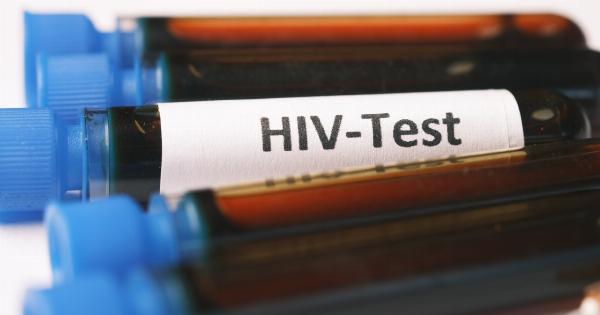Human Immunodeficiency Virus (HIV) remains one of the most significant global health challenges. Since its discovery in the early 1980s, the virus has claimed millions of lives and severely impacted communities worldwide.
However, significant progress has been made in the fight against HIV over the years. From cutting-edge treatments to increased awareness and prevention efforts, countless battles have been won in this global effort.
Understanding HIV
To effectively fight HIV, it is essential to understand the virus and its transmission. HIV attacks the body’s immune system, specifically targeting CD4 cells, which play a crucial role in defending against diseases.
The virus weakens the immune system, making individuals more susceptible to various infections and illnesses. HIV can be transmitted through unprotected sexual intercourse, sharing needles, or from mother to child during childbirth or breastfeeding.
The Progress of Treatment
One of the most significant battles in the fight against HIV has been the development of antiretroviral therapy (ART).
ART has revolutionized the treatment of HIV, transforming it from a terminal illness to a manageable chronic condition for those who have access to medication.
ART works by suppressing the replication of the virus in the body, allowing the immune system to rebuild itself and remain strong.
Over the years, advancements in ART have led to more effective and easier-to-administer regimens, improving patient outcomes and quality of life.
Moreover, the development of pre-exposure prophylaxis (PrEP) has been instrumental in preventing HIV transmission.
PrEP involves the use of antiretroviral drugs by individuals who are at high risk of contracting HIV, significantly reducing their chances of infection. The availability and use of PrEP have been crucial in preventing new HIV cases and reducing the overall spread of the virus.
Reducing Stigma and Discrimination
Stigma and discrimination surrounding HIV have been formidable barriers in the fight against the virus.
They not only hinder individuals from seeking testing and treatment but also contribute to the social and psychological burden experienced by people living with HIV.
Efforts to combat HIV stigma have included education campaigns, increased public awareness, and legal protections against discrimination.
By raising awareness about HIV transmission, prevention, and treatment, misconceptions and prejudices can be challenged, leading to a more inclusive society. Organizations and advocates working tirelessly in this battle have helped foster an environment that encourages open dialogue, reduces stigma, and provides support for people living with HIV.
Education and Prevention Initiatives
Another crucial aspect of the fight against HIV is education and prevention. Alongside advancements in treatment, efforts to prevent new infections remain a top priority.
Education initiatives aim to inform individuals about HIV transmission, prevention methods, and the importance of regular testing.
Condom use, for example, plays a vital role in preventing the spread of HIV during sexual encounters.
Organizations and health agencies across the globe have worked tirelessly to promote condom usage through campaigns and educational programs, ensuring that individuals have access to this effective method of protection.
Furthermore, HIV testing initiatives have been instrumental in identifying new cases, as early diagnosis promotes early access to treatment, reducing the transmission to others.
Mobile testing units, community health clinics, and increased access to testing centers have played a pivotal role in expanding testing capabilities, particularly in underserved areas.
Addressing HIV in Vulnerable Populations
HIV disproportionately affects vulnerable populations, including sex workers, men who have sex with men (MSM), transgender individuals, people who inject drugs, and marginalized communities.
To win the battle against HIV, it is crucial to address the specific needs and challenges faced by these populations.
Community-based organizations and outreach programs have been vital in providing healthcare services, prevention resources, and support to these populations.
By tailoring interventions to the unique circumstances of vulnerable groups, rates of new infections can be effectively reduced.
Advocacy and Policy Changes.
Advocacy plays a pivotal role in shaping the fight against HIV.
Activists and organizations have relentlessly pushed for policy changes, increased funding for research and treatment, and improved access to healthcare services for all individuals affected by HIV.
Advocacy efforts have led to significant policy advancements, such as the implementation of needle exchange programs, which aim to reduce the transmission of HIV among people who inject drugs.
Additionally, the establishment of comprehensive sex education programs in schools has proven effective in equipping young people with the knowledge and skills to make informed decisions regarding their sexual health.
Global Collaborations
HIV is a global issue that requires a unified effort to overcome. International collaborations have played a crucial role in sharing resources, knowledge, and best practices in the fight against HIV.
Global health organizations, such as UNAIDS, have led initiatives to bring together governments, NGOs, and other stakeholders to coordinate efforts and maximize impact.
Such collaborations have fostered innovative research, improved access to treatment, and enabled the sharing of successful strategies across countries and regions.
By pooling resources and expertise, the HIV community has been able to make significant strides in the fight against the virus.
Looking Ahead: The Path to an HIV-Free Future
The progress made in the fight against HIV is remarkable, but the battle is far from over. As we look ahead, it is essential to continue advocating for increased funding, strengthening prevention efforts, and expanding access to treatment and care.
Research into an HIV vaccine remains a top priority. The development of a safe and effective vaccine would significantly impact the trajectory of the global HIV epidemic, offering hope for a future generation free from the burden of the virus.
Every battle won against HIV brings us closer to an AIDS-free world.
With continued dedication, collaboration, and a focus on addressing both the medical and social aspects of the epidemic, we can strive towards a future where HIV is no longer a global threat.





























